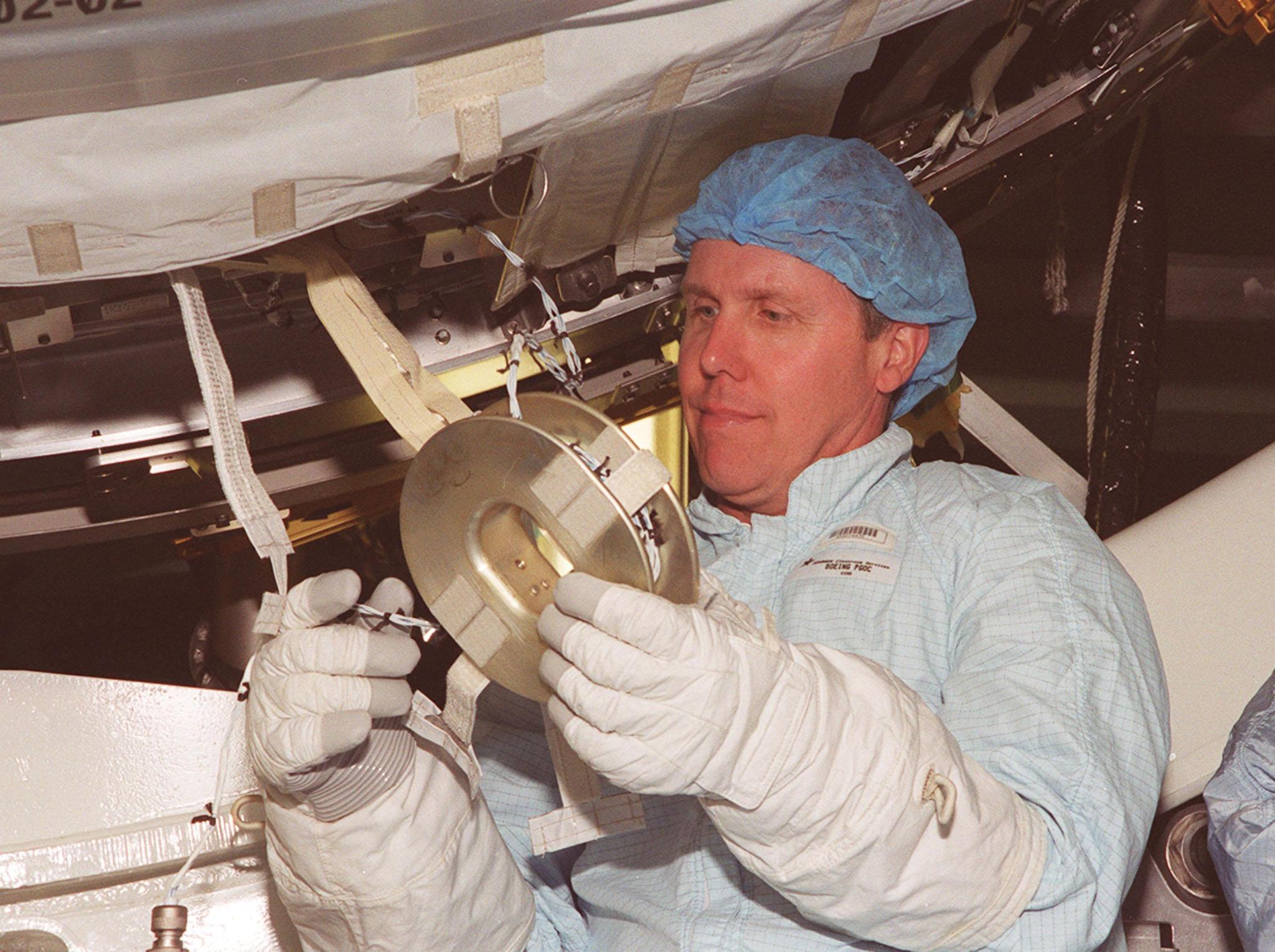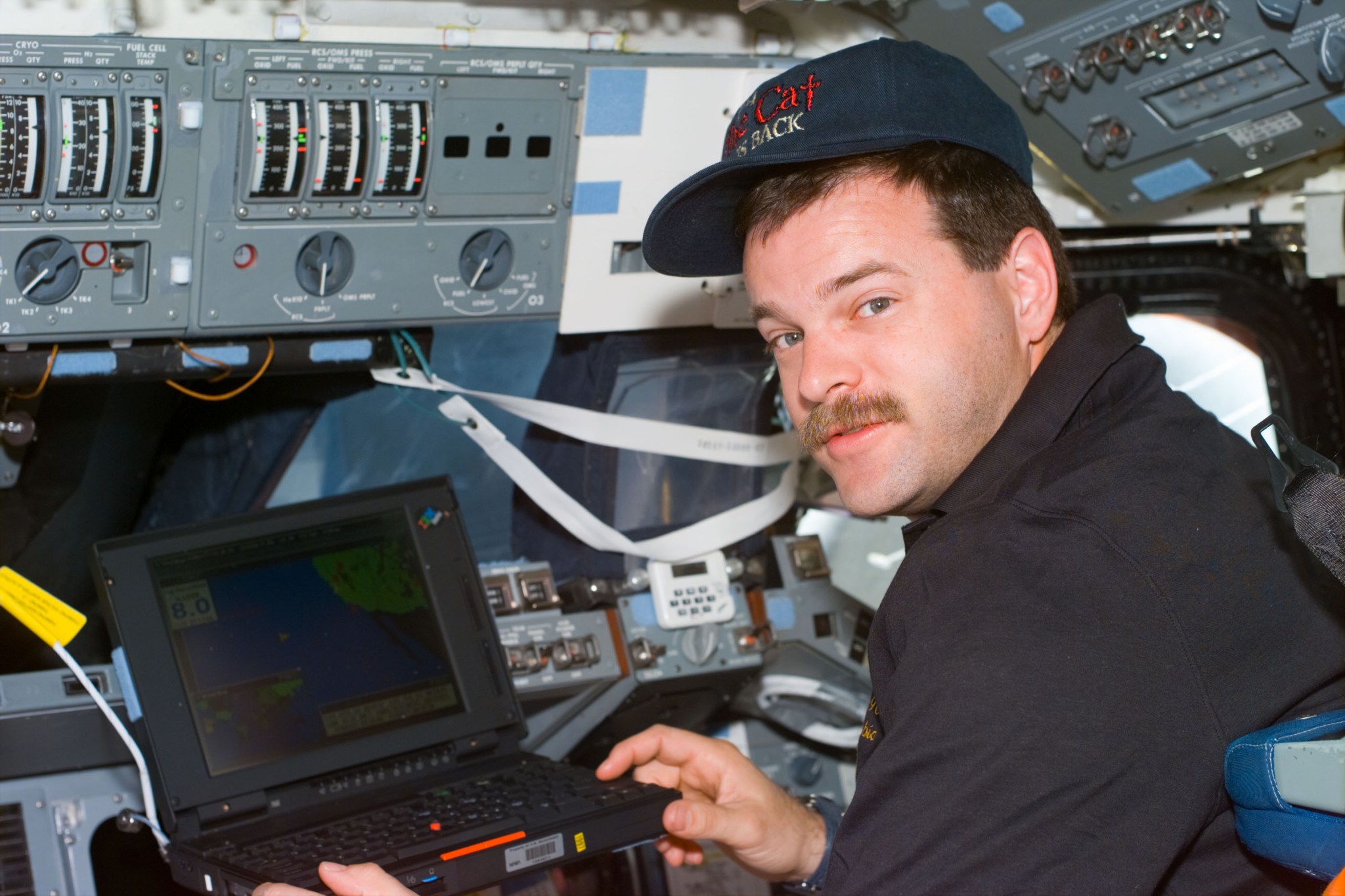The Space Shuttle Atlantis attraction served as the backdrop for the U.S. Astronaut Hall of Fame (AHOF) induction ceremony April 21 at NASA’s Kennedy Space Center Visitor Complex in Florida. Beneath Atlantis, two veteran space explorers, Scott D. Altman and Thomas D. Jones, were inducted as the class for 2018. This year’s induction brings the total number of AHOF members to 97.
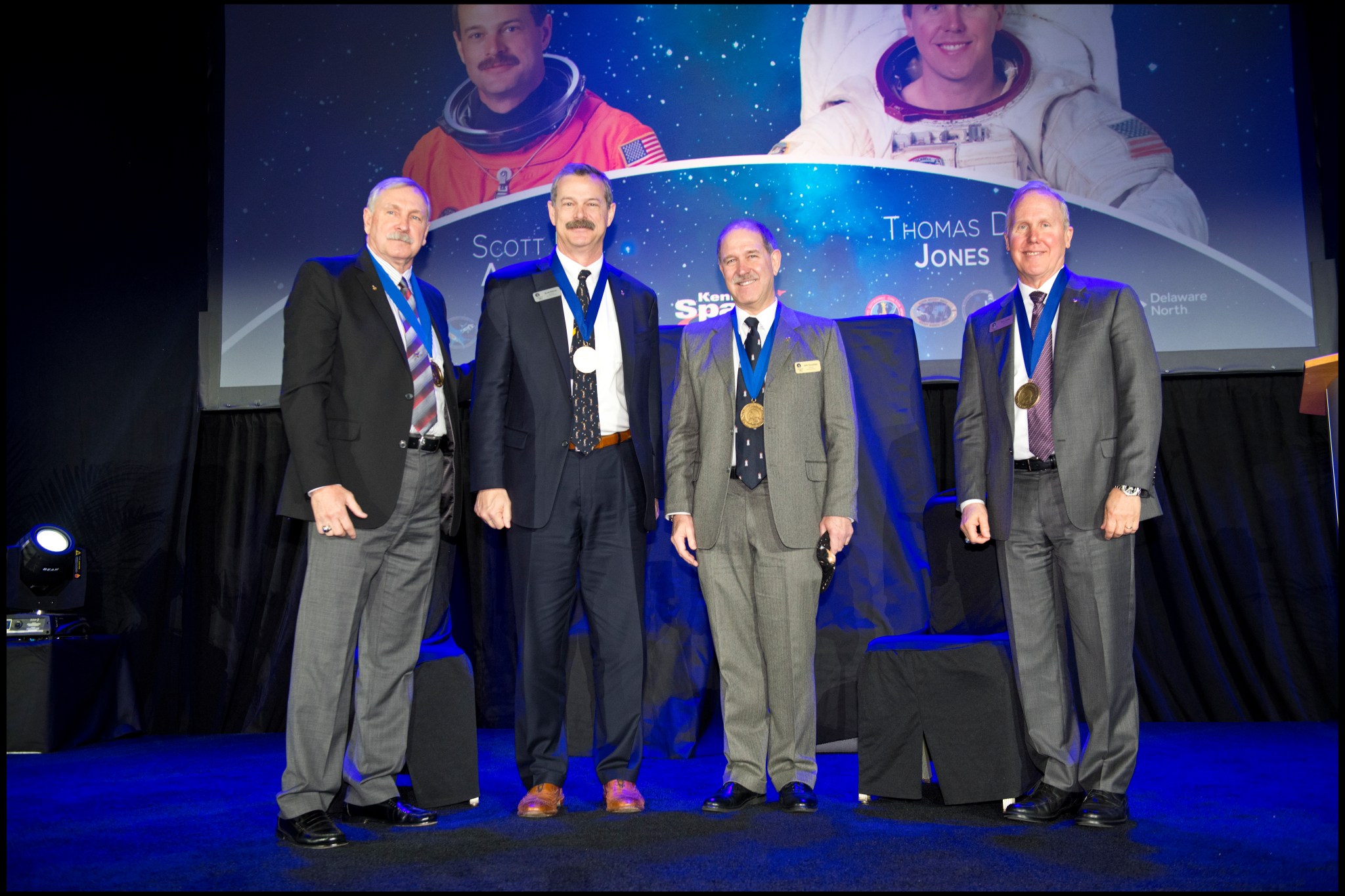
Master of Ceremonies John Zarrella, former CNN space correspondent, praised the inductees for their contributions to NASA’s space program. Together, Altman and Jones have a combined 93 days in space.
“Today we’re here to honor two space explorers who have flown a combination of eight space shuttle missions, one as a pilot and commander, one as a scientist and spacewalker,” Zarrella said. “One is named in movie credits, one has an asteroid named for him.”
They each received an official medal and were inducted by former NASA astronaut and Hall of Famer Curt Brown, board chairman, Astronaut Scholarship Foundation (ASF).
Thomas D. Jones
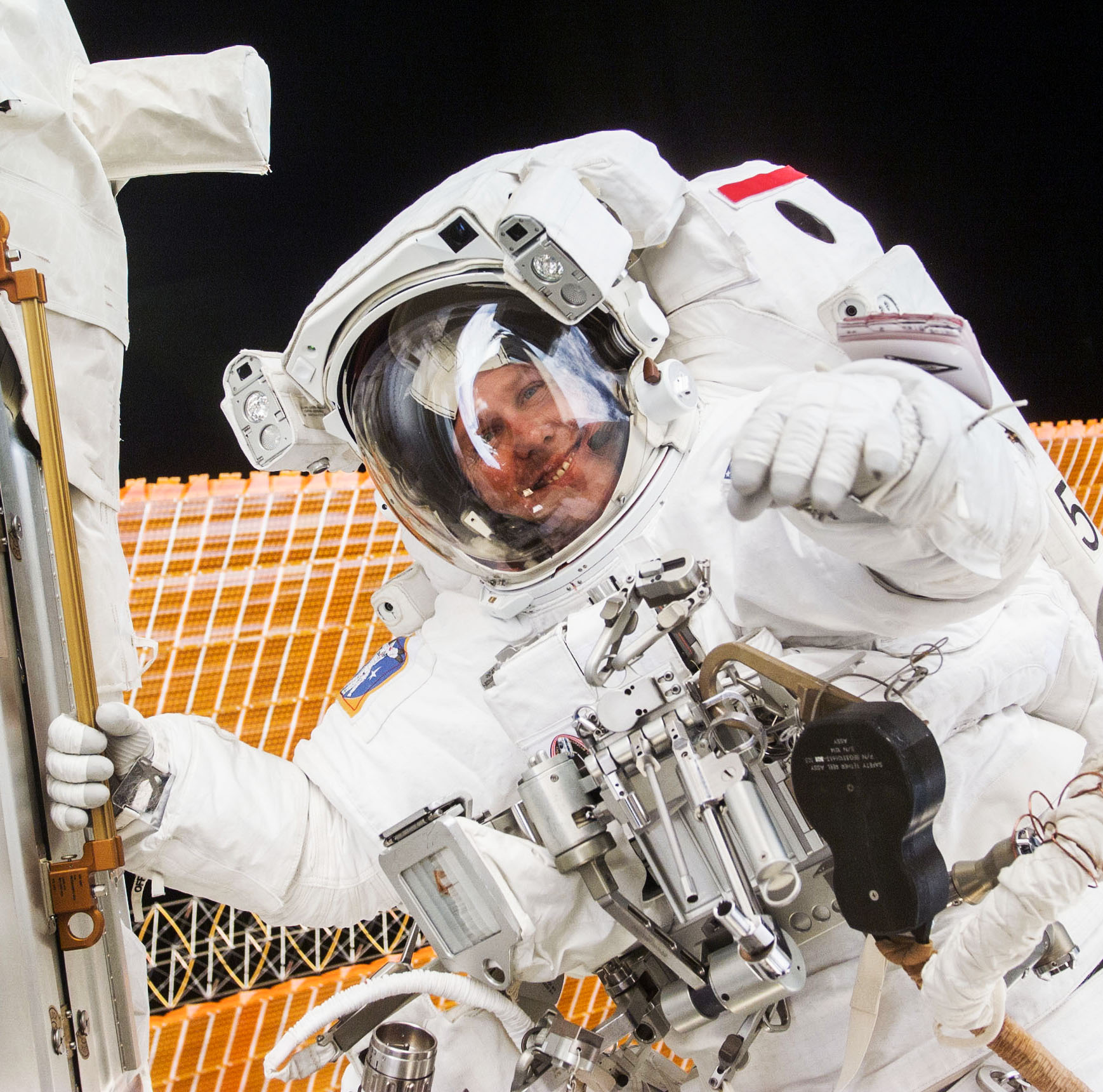
“I dreamed of working here,” Jones said. “It’s gratifying to join this group. This event continues to further the Mercury astronauts’ vision. Thank you for this great honor.”
The Baltimore, Maryland, native attended the U.S. Air Force Academy in Colorado Springs and earned a Bachelor of Science in basic sciences in 1977. He earned a doctorate in planetary science from the University of Arizona in Tucson in 1988, graduating Phi Beta Kappa. In 1990, Jones joined Science Applications International Corporation in Washington as a senior scientist. He performed advanced program planning for NASA’s Solar System Exploration Division, investigating future robotic missions to Mars, asteroids and the outer solar system.
After a year of training following his selection by NASA in January 1990, Jones became an astronaut in July 1991. His space shuttle missions include STS-59 aboard Endeavour in April 1994, and payload commander on STS-68 in October 1994, again on Endeavour. His next mission was STS-80 aboard Columbia in late 1996. During that mission, he helped set a shuttle endurance record of nearly 18 days in orbit. Jones used Columbia’s robotic arm to release the Wake
Shield satellite and later grapple and retrieve it from orbit.
His final space flight was aboard Atlantis on STS-98 in February 2001. Jones and his crew delivered the U.S. Destiny Laboratory Module to the International Space Station. During a series of three spacewalks totaling more than 19 hours, he helped install the lab and gave the first Expedition Crew the largest space outpost in history. Delivery of the lab also marked the start of onboard scientific research on the space station.
Jones retired from NASA in 2001 with a total mission time of 53 days and 48 minutes and three spacewalks. He has written several books, including “Sky Walking: An Astronaut’s Memoir,” and “Ask the Astronaut: A Galaxy of Astonishing Answers to your Questions on Spaceflight.” He also co-authored National Geographic’s “Planetology: Unlocking the Secrets of the Solar System.”
He currently writes, speaks, and consults on space exploration, space operations, space resources and planetary defense. The Main Belt asteroid 1082 TomJones is named in his honor.
“The space program gave me immense pride in my country. Becoming an astronaut was certainly ‘the best job I ever had.’” Jones said.
Scott D. Altman
Altman, nicknamed “Scooter,” was always fascinated with the idea of flying. When he was young, he told his parents he wanted to be a pilot.
“I’m happy to finally be here. It’s a wonderful day. I thank God for all the blessings in my life,” Altman said.
Altman earned a degree in aeronautical and astronautical engineering at the University of Illinois. While attending college, the U.S. Navy sent him a brochure and he was quickly sold on becoming a Navy aviator. While based at the Navy’s Top Gun School at Air Station Miramar in San Diego, California, Altman flew the F-14 Tomcat. When the 1986 movie, “Top Gun” was filmed, Altman — call sign “Scooter” — stood in for Tom Cruise’s character, “Maverick,” and flew an F-14 jet in aerobatic flight sequences.
Altman graduated from the Navy Test Pilot School in June 1990. Five years later, he was selected by NASA as an astronaut and reported to Johnson Space Center in Houston in March 1995.
He served as pilot on his first mission, STS-90, aboard Columbia in April and May 1998. The 16-day mission of the European Space Agency’s Spacelab laboratory module focused on the effects of microgravity on the human anatomy. Two years later, he served as pilot for STS-106 aboard Atlantis in September 2000.
In March 2002, the shuttle Columbia lifted off on STS-109 with Altman as commander for the fourth Hubble Space Telescope servicing mission. Over 11 days, spacewalking astronauts upgraded the telescope with improved solar arrays, a new camera and a power control unit for the orbiting observatory. On Altman’s fourth and final flight, STS-125 in May 2009, he again served as commander, this time aboard Atlantis. It was the final Hubble Space Telescope servicing mission, during which the crew performed five spacewalks to replace cameras, a guidance sensor, gyroscopes and battery units.
Following STS-125, Altman served as the chief of the Exploration Branch of the Astronaut Office. He participated in the development of NASA’s next human-rated spacecraft, Orion, designed to take crews to deep space or to the Lunar Orbital Platform-Gateway.
Altman retired from NASA in September 2010. He joined Arctic Slope Regional Corporation’s Federal Research and Technology Solutions in Greenbelt, Maryland, as senior vice president of Civil Programs.
“Finding that challenge and continuing to grow is a lifelong endeavor,” Altman said. “We don’t just look back, we also look forward.”
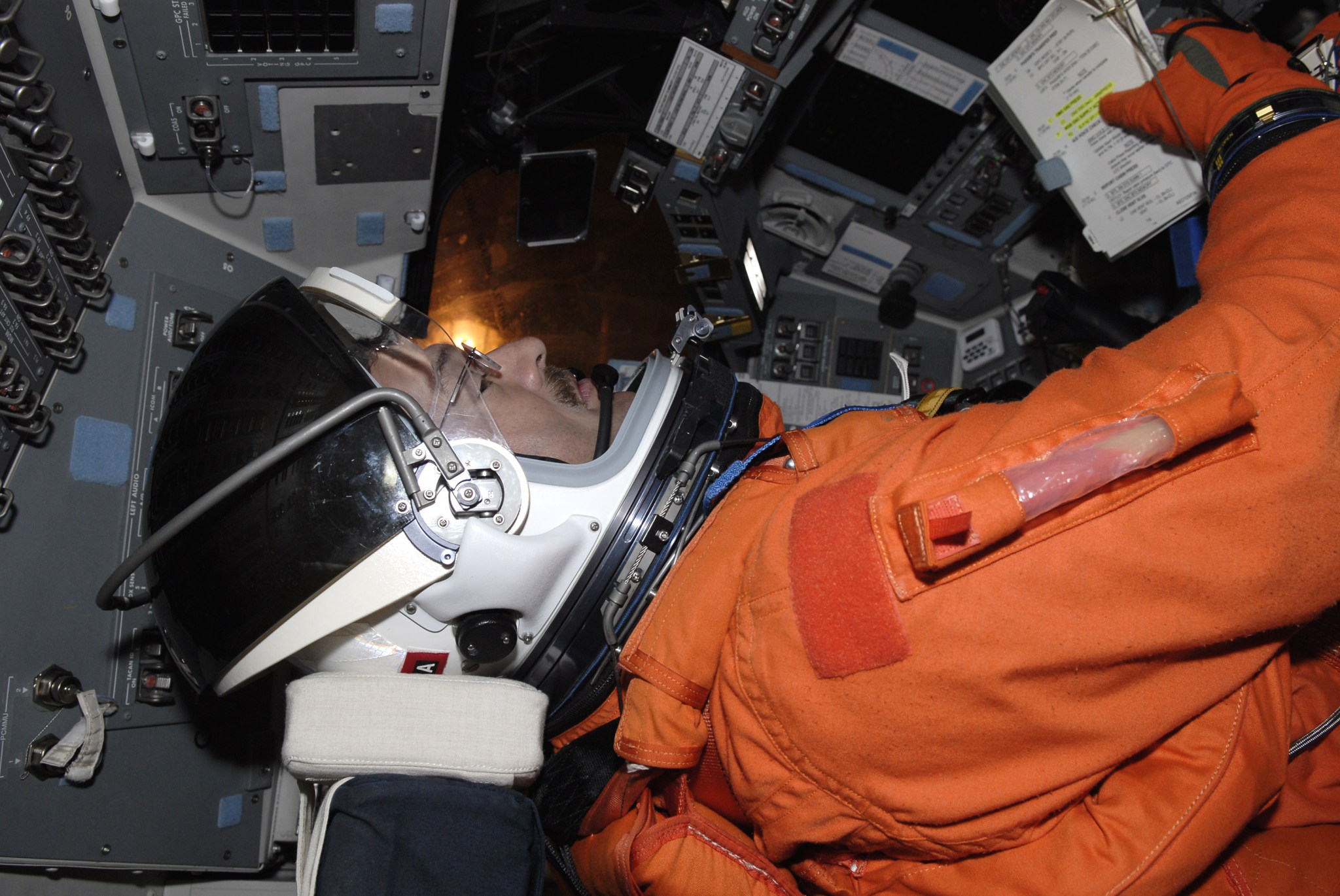
“It’s such an honor to join this group of my much more accomplished and famous colleagues. I stand in awe of them,” Jones said. “Exploration is a story without an end. Many of the young people here will write their own chapters in that story. I can’t wait to see what discoveries they reveal.”
When asked if he had any advice for students, Altman said, “Keep trying, do your best, don’t give up and always follow your dreams.”
The 2018 inductees were selected by a committee of Hall of Fame astronauts, former NASA officials, flight directors, historians and journalists. The process is administered by the ASF, which was founded by the original seven Mercury astronauts in 1984. To be eligible, an astronaut must have made his or her first flight at least 17 years before the induction and retired from NASA for at least five years. Each candidate must be a U.S. citizen and a NASA-trained commander, pilot or mission specialist who has orbited Earth at least once.
Brown said the ASF has awarded nearly $5 million to more than 500 college students majoring in science, technology, engineering and mathematics, or STEM, studies.





























